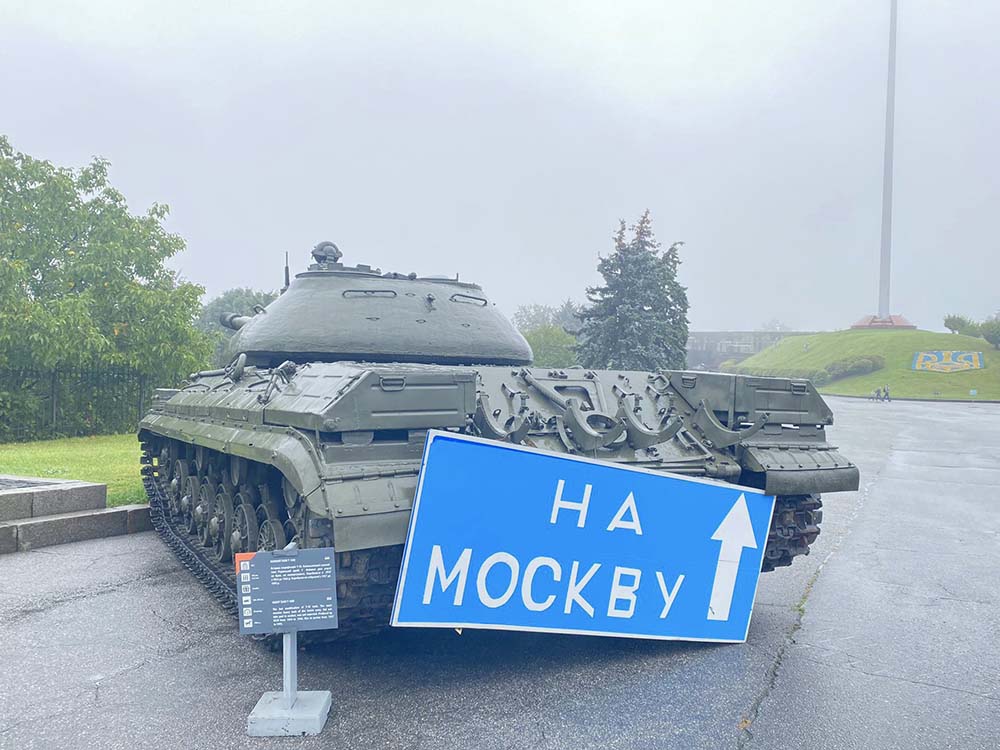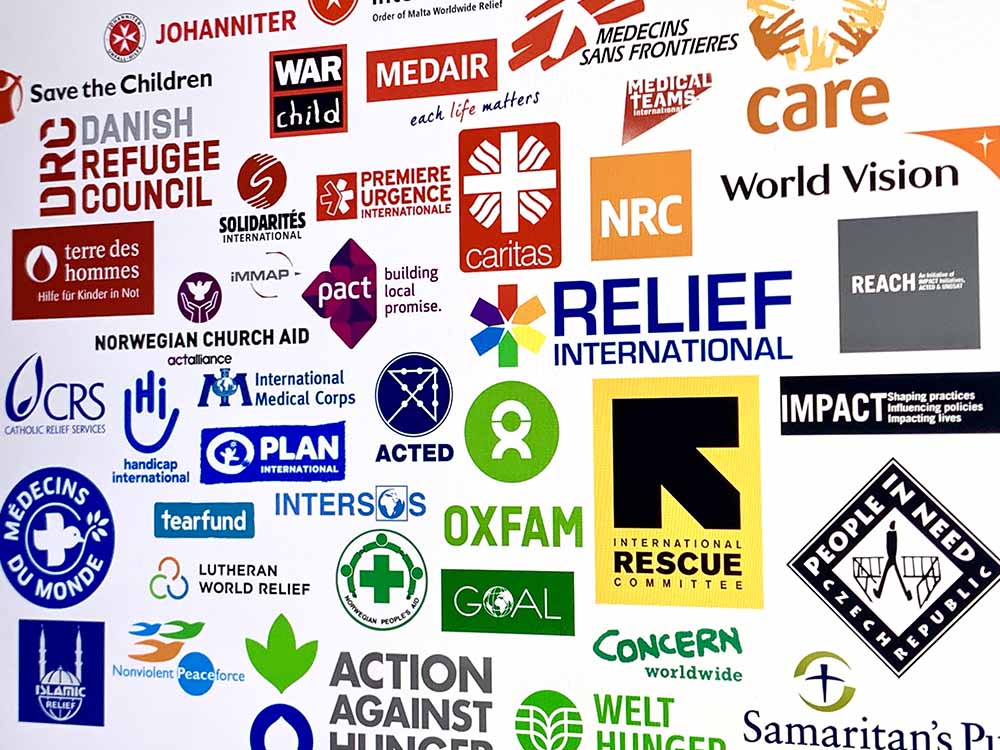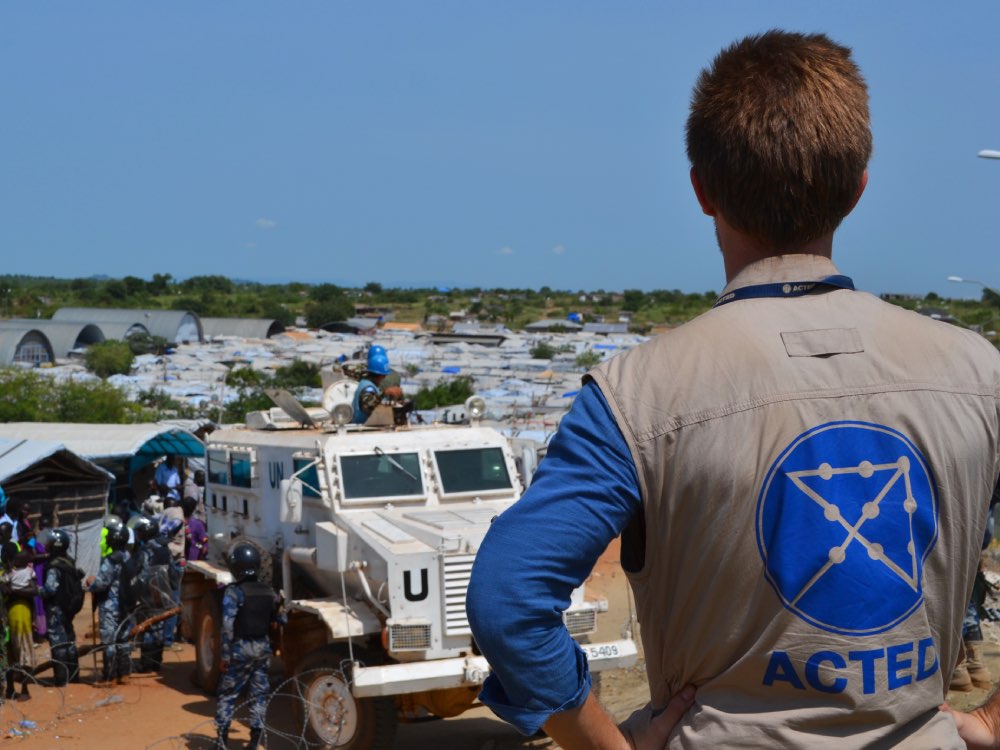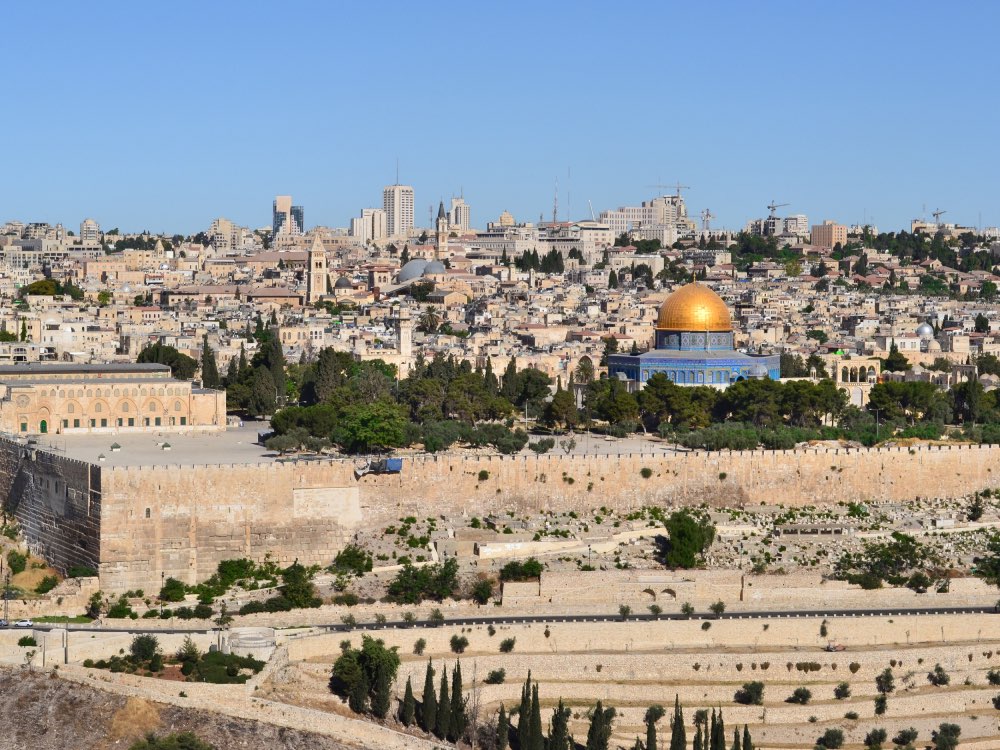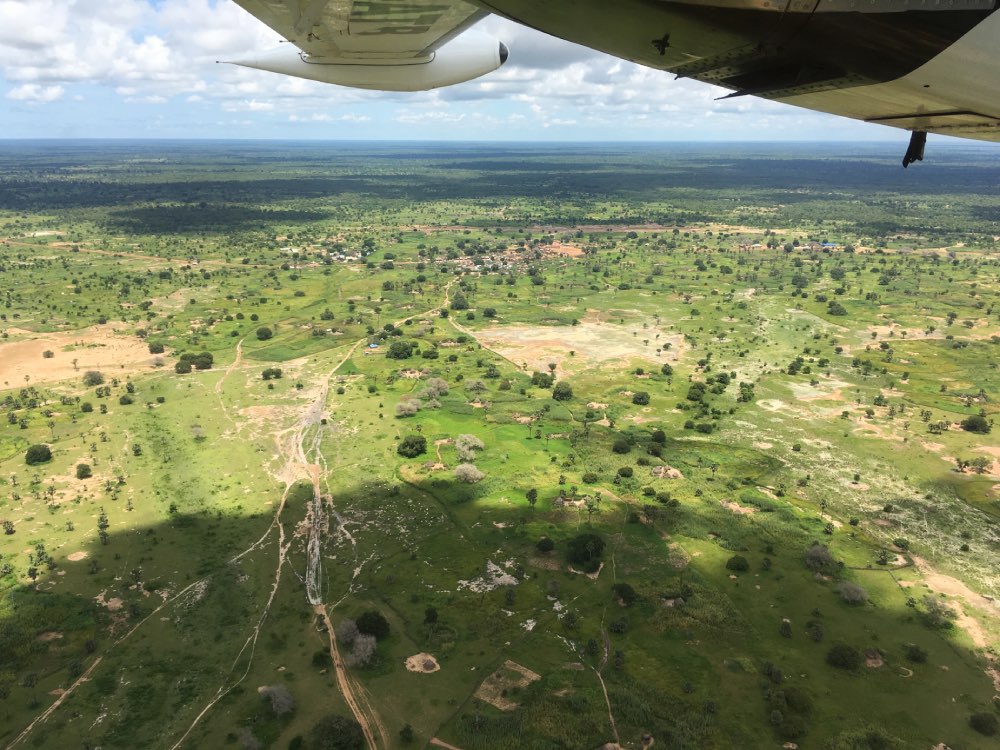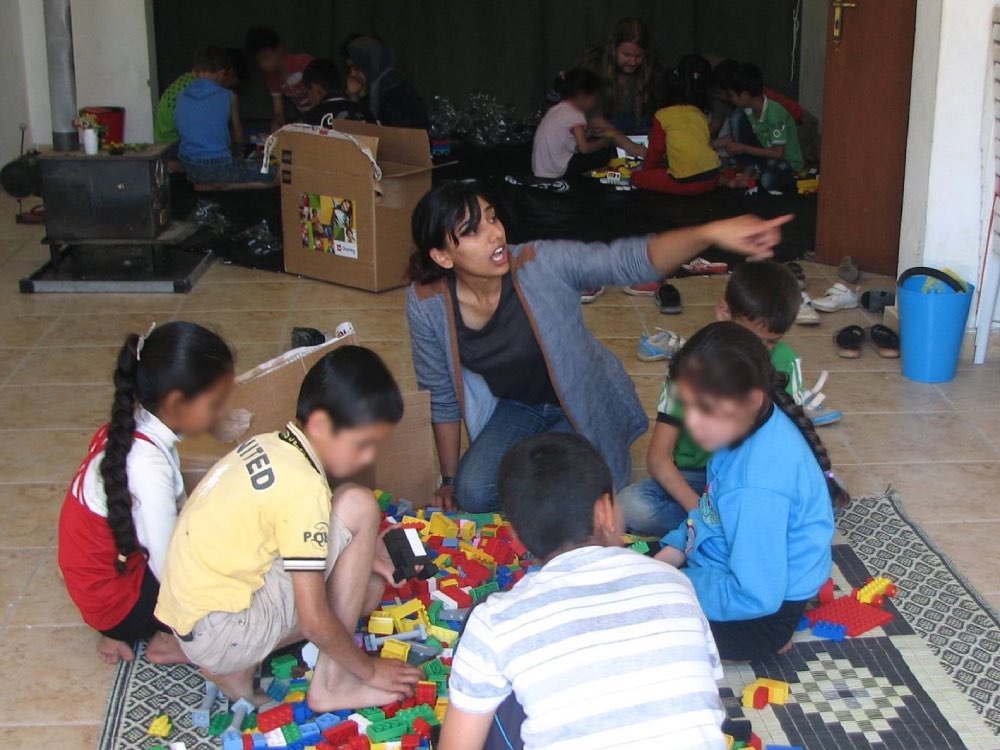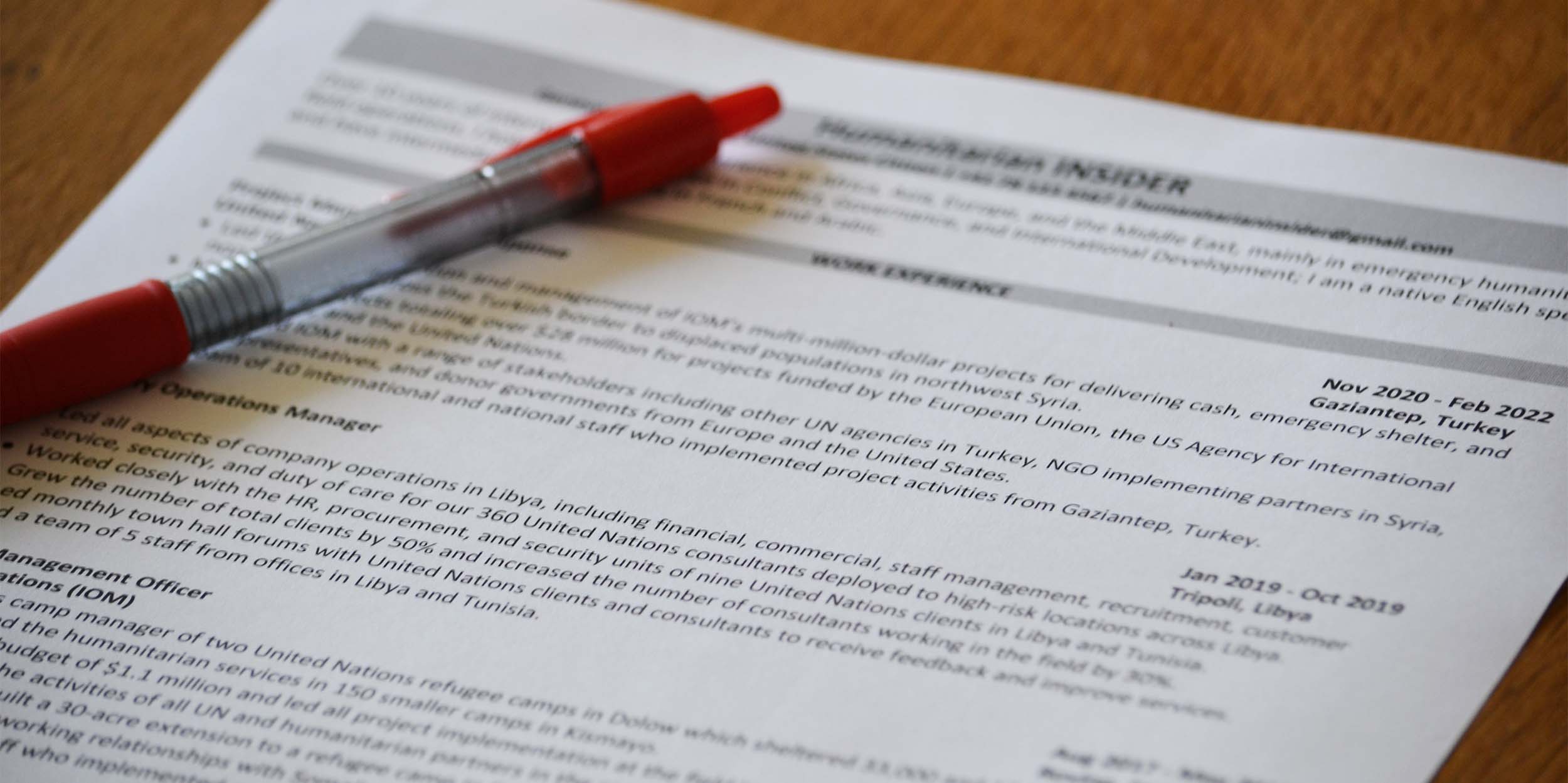
The perfect humanitarian CV and cover letter
Hiring managers from across the aid industry give their advice on what makes a great CV and cover letter. However, they don’t always agree.
There is no shortage of advice on the internet: how to fix a broken washing machine, how to make a crying baby fall sleep, or even how to do a barbell bench press without engaging your anterior deltoids. (Yes, these are the last three things that I Googled for advice.) Unfortunately, not all search engine guidance can be trusted, which explains how I’ve managed to re-injure my deltoid twice in one year.
The untrustworthiness of internet advice also applies to queries about how to write a humanitarian CV or cover letter. Most of the guidance out there is written by bloggers without inside knowledge the humanitarian sector, and many articles are just fluffed-up generic CV tips masquerading as customised advice for aspiring aid workers, seemingly written by A.I. algorithms.
So what do the people who actually do the hiring for NGOs and the United Nations think should be on your CV and cover letter?
To answer this question, we delved into our humanitarian network to speak with eight program managers and senior specialists – from across a wide range of technical specialisations – who have personally done extensive recruitment in the aid sector. We asked them: What do they like to see in a CV and cover letter when they are hiring?
The good news: the advice below is honest, practical, and comes straight from the people who may actually review your job applications one day. The unfortunate news: many of them disagree on what exactly makes a CV sparkle and a cover letter dance.
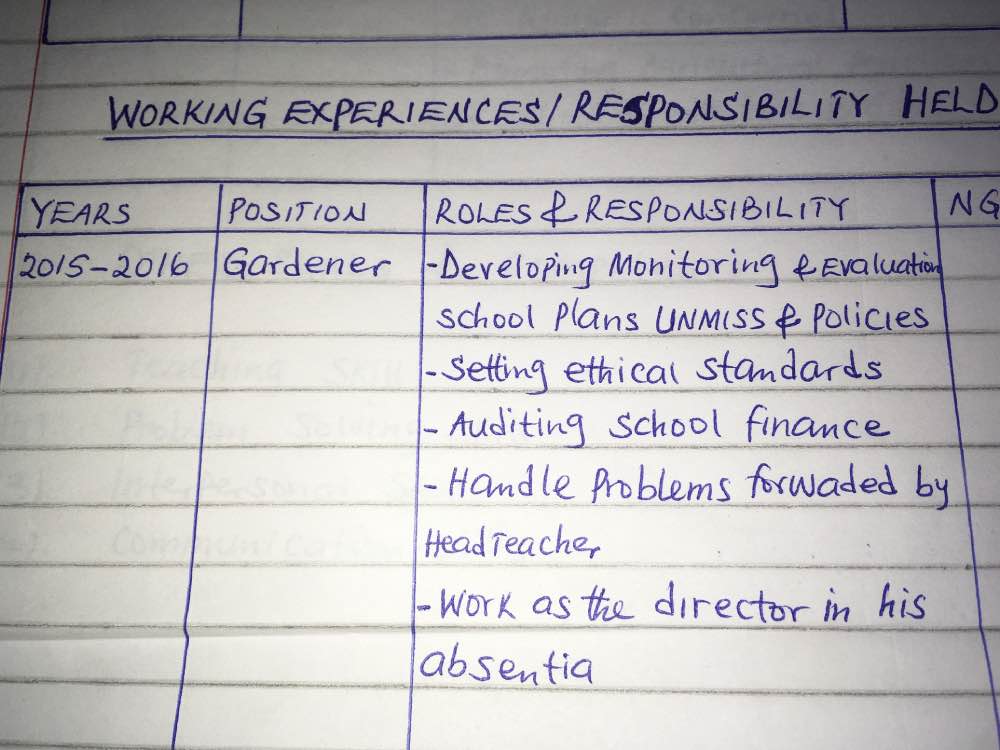
But first, some Insider advice for your CV
Before we dive into what the panel of humanitarian experts thinks, we would like to politely hijack this article to share our own homebrewed Insider recipe for the perfect humanitarian CV. (If you want to skip to what the pros in the field think, you can click here.)
Formatting
There is a lot of room for flexibility — and even creativity — in how you format your CV, if you keep two key principles in mind. First, be consistent. For example, if you bold your job titles and italicise the organisation names in your work experience section, then do it the same way for each entry. Second, aim for a “classic” (i.e. boring) look. Excessive use of colours or graphics don’t fit the humanitarian aid industry standard. If you must use colour, choose only one.
When choosing how to format your CV, remember that the goal should always be to highlight (metaphorically) the relevant aspects of your skills and experience. If your formatting is a distraction, simplify it.
The formatting in the images below is suggestive only. Feel free to format your CV in a way that expresses your personality, so long as it consistent and easy to read.

Personal information
This section, which sits at the very top of your CV, should include your name, your location (or full address if you want), a phone number, and email address. If it’s relevant or advantageous, you can also add your LinkedIn profile, your nationality, or your work permit status in the country you’re applying to. Don’t put your birthday.
Photo
While looking chic in the field is serious business for some aid workers, you will be relieved to know that humanitarian hiring processes are not based on appearance. A headshot on your CV is 100% optional. And if you’re unsure, the safe option is probably not to have a photo. (Personally, I have never used a photo on my CV.)
However, if you do choose to have a picture, ensure that the photograph is of professional quality and that you look nice in it.
Due to living conditions in the field, the people hiring you may also live and work with you in very close quarters, so your personality is a weighty consideration. Most humanitarians prefer to work with positive, cheerful people in such tough conditions, so if you have a photo, make sure that it radiates amicable vibes.

Profile summary
If you don’t have a profile summary section at the top of your CV, you’re potentially missing a golden opportunity. This section is your chance to succintly demonstrate that you meet the minimum requirements of the job.
To make optimum use of this section, take a close look at the key requirements of the job advertisement that you’re applying to (usually they will be toward the bottom of the advert). Usually the requirements will fall into these categories:
- Years of work experience (e.g. “At least 2 years of relevant experience”)
- Education level (e.g. “Bachelor’s degree required, master’s degree preferred”)
- Technical knowledge (e.g. WASH, Shelter, etc.)
- Hard skills (e.g. report writing, project management, etc.)
- Language skills or country-specific knowledge (e.g. previous work related to the Middle East or fluency in Ukrainian).
Once you understand the requirements, craft your profile summary in a way that clearly demonstrates that you meet as many of these as possible. For example:
Entry-level professional with 1 year of combined humanitarian experience in project reporting for WASH programming in Ethiopia. Native French speaker with fluency in English, and a recent master’s degree graduate in International Development.
With a quick scan of these 2 – 4 lines, a hiring manager should be assured already that you could be a great fit for such a role, and intrigued enough to read the rest of your CV in detail.
If you are transitioning into aid work from another career — and your CV is filled with non-humanitarian experience — your profile summary is also the best place to explain your career change in just a few words. For example: “Experienced supply chain manager with 5 years of experience, now transitioning into the aid sector.”
If you are a recent university graduate, this is also the place to acknowledge that while you may not have any humanitarian experience yet, you are aiming for a career in the sector. For example, “Recent graduate and aspiring aid worker…”
Absolutely do not write generic phrases touting how you are “organized and detail-oriented” or “able to work independently” or “have excellent interpersonal and communication skills”. While these claims may be true, they are tedious to read, impossible to verify, and, well, everyone writes these boilerplate phrases and so they won’t set you apart from other candidates.

Education
If you earned your higher education degree at a prestigious university, you may be discouraged to learn that where you studied is not a vital consideration in the humanitarian sector.
Whether you earned your degree at Oxford or Tafila Technical University, the only two things that really matter to HR screeners and hiring managers are: what is the highest degree level that you have attained (either a bachelor’s degree or a master’s degree), and if your degree is in a “relevant” field of study — which is typically so broad that it doesn’t matter if you studied humanitarian aid, international relations, international development, a foreign language, or most of the social sciences.
Therefore, in the education section of your CV, clearly state each degree level and title. For example, “Master of Arts in International Development”. Of course, you must also include the name and location of the university and your graduation year.
If you are a recent graduate, your education should be at the top of your CV: after your profile summary, but before your work experience. If you’ve already worked for a few years, put your work experience first. Adding information about your thesis title or the courses that you took is optional, and is only relevant if you are a recent graduate with minimal work experience.
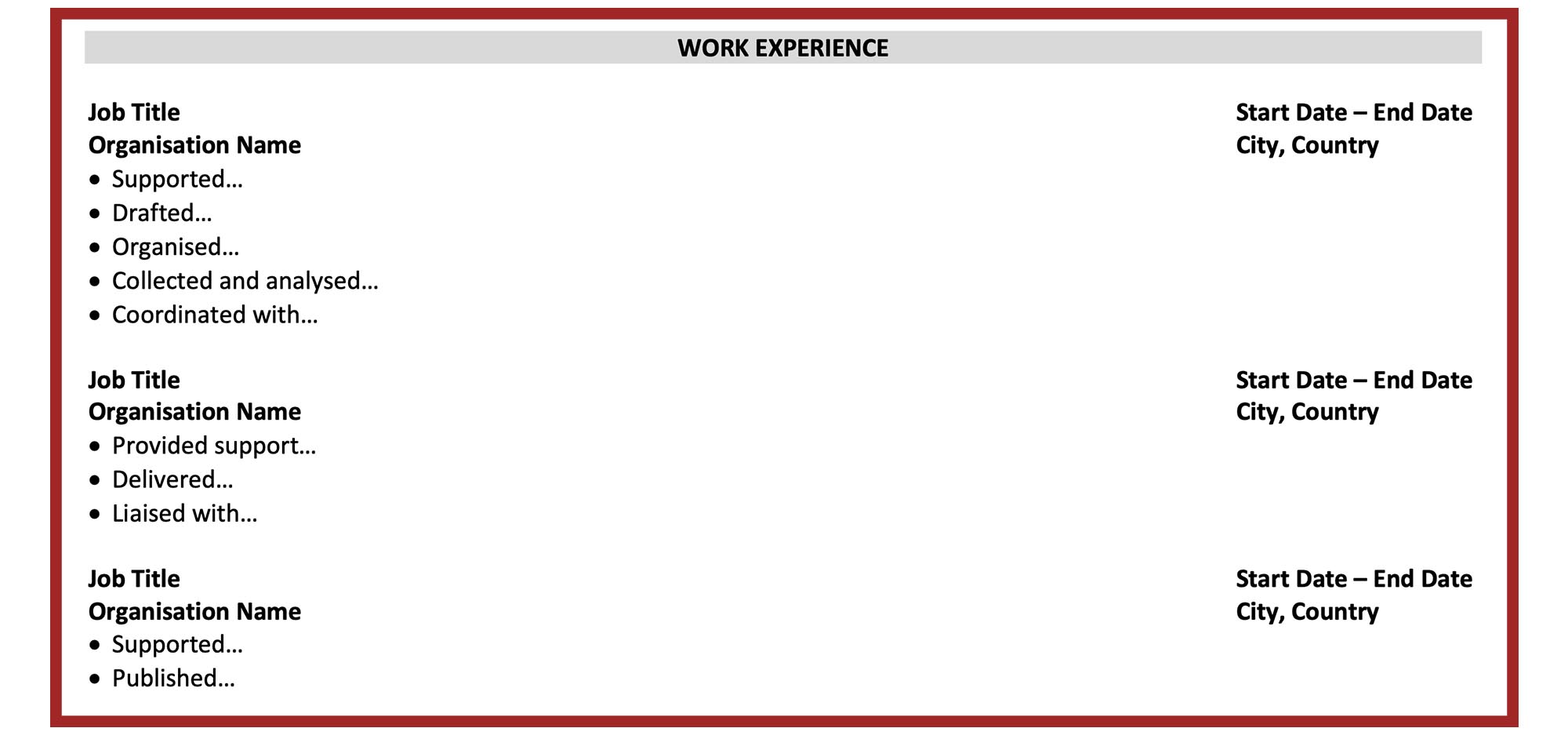
Work experience
This is the most important part of your CV. When humanitarian hiring managers quickly scan your CV (usually in 1-2 minutes, as you will see below), they want to know what you did in your previous work. Getting it right can make or break your application.
First, you should have between 3-6 bullet points for each work experience, with fewer points for older work experiences. Each bullet point should begin with a verb in the past tense. For example, do not write “I researched…” or “Research…” or “Researching…”. Instead, start the bullet point with “Researched…”
Second, be specific and quantify your achievements. For example, instead of writing “Organised conferences and events”, you should say, “Organised 3 week-long conferences with over 100 participants from a dozen countries”. Instead of saying that you “Wrote reports”, you should say, “Wrote monthly 5-page progress reports for a variety of projects, and co-wrote the annual 20-page report summarising all the organisation’s field activities and achievements in 2020 and 2021”. Adding these details helps the hiring manager understand the scope and scale of your experience.
Finally, and most importantly, tailor your previous work experience to the job advertisement that you are applying to. You should be adapting the text of the bullet points for each new job applications, even if only slightly. For example, if your previous job called it “grant writing” but the job advertisement calls it “project development”, then use the latter term. If the primary responsibility of the advertised job is managing a team of data enumerators in the field, and if you did something similar in a previous position, then move this bullet point up to the top of that work experience.
As a side note, ensure that any acronyms you use will be understood by the humanitarian hiring manager reading your CV. You — and everyone from your previous job — may know what a “3PL” is, but if it’s not a term in common usage in the aid industry, use the full words instead of an acronym (I still don’t know what a 3PL is but I did see it on a CV once).

Languages
It may surprise you that language skills beyond English (or French in francophone Africa) are not often required for international humanitarian positions. However, they are almost always “preferred”. For example, a job advert might read: “Full working proficiency in English required, knowledge of Arabic preferred”.
You should list your language abilities toward the end of your CV. We recommend that you describe your level of proficiency using both widely understood terms like “beginner” or “intermediate”, and also the appropriate CEFR reference level. For example, “Spanish (native), English (fluent, C2), Russian (beginner, A2)”.
Volunteer experience
When trying to launch a career in humanitarian aid, volunteer work is often the best way to gain experience. If you have volunteered in some relevant way — with your local Red Cross society after a natural disaster, with children or the elderly in your community, or perhaps as part of a student initiative in university — you should include it in your CV. You can either make a separate section for volunteer experiences, or you can include them within the work experience section.
...And insider advice for your cover letter
The depressing reality is that, although cover letters are a requirement for nearly all humanitarian job applications, most of them are never read. Hiring managers are too busy to pore over 150 letters when screening applications, and sometimes the Human Resources unit does not even forward the cover letters to the hiring panel.
However, sometimes cover letters are read, usually at the final shortlisting stage when the hiring manager must whittle her list from ten excellent candidates to a final list of just three or four to interview. At this stage, they already know your skills and experiences from your CV, and they are looking to read new information in your cover letter that will set you apart from the other qualified candidates.
There are two takeaways from this (rather demotivating) information: First, you must ensure that every crumb of important information is on your CV. Leave nothing vital to the cover letter, because it may not be read. Second, if you’re trying to submit an application with a short deadline, focus your energy on your CV. You should always submit a first-rate CV and, if you must, you can submit a second-rate cover letter.
Our cover letter recipe
Do not write a cover letter that is a repeat of your CV in paragraph form. You must be confident that the hiring manager has already read your CV in detail and knows your skills and experience.
Rather, your cover letter should provide new information. Specifically for entry-level candidates, your motivation is crucial at this point in your career. A convincing explanation of your personal motivations may be the key thing that separates you from other highly qualified entry-level aspiring aid workers.
Therefore, we recommend a cover letter that focuses on your motivations for the role, using a five-paragraph structure like this:
- Brief introduction (state which position you are applying to, and where you found the advertisement)
- Your motivation for the sector (why do you want to work in humanitarian aid?)
- Your motivation for the organization (there are dozens of humanitarian organisations; why do you want to work for this one?)
- The skills and added value that you bring to this specific role (identify the 2-3 key requirements for the job and clearly explain how you have all the right qualifications to succeed)
- Closing (state your willingness to discuss everything further in an interview, and give your soonest availability to start working)
Now, on to the experts
Et voilà. That is our advice. Now, on to the opinions of eight humanitarian program managers and senior specialists who have shared their reflections on what makes a great CV and cover letter in the aid industry:
Just job titles and duty stations
“To be honest, when I’m hiring I never ever read the cover letter. But if I do, and if it’s long, it annoys me [laughs]. I feel like the cover letter should be super to-the-point, only summarising your key experience.
The CV does the majority of the talking. I want a two-page CV maximum, just a few bullet points for each position, and nicely laid out. If it’s creatively formatted then I’m extra attracted to it as that shows initiative and attention to detail.
For me, in the humanitarian sector, the main things that I look at on a CV are the previous job titles and duty stations. This tells me what I need to know very quickly. For example, if I’m looking for a Health staff in Yemen and I see that an applicant was a Health Officer in Bangladesh previously for one year, I’ll automatically interview them because that experience is super relevant.”
– M. has worked for the United Nations and several large international NGOs for the past ten years in Africa, Central America, and the Middle East.
Do not be a misogynist macho racist
“The key elements for a good CV are the following: clear and short. More than two pages is often a no-go for me. It’s important for me to know clearly the name of the humanitarian donors that they have worked with, as well as some quantifiable information about the sizes of the budgets they have managed (if any), and the number of projects or staff that they managed (if any). Language skills are also important, as I need to know that they will be able to communicate clearly with both headquarters and the country office.
On the cover letter, I really appreciate when candidates give personal and non-generic reasons why they are applying. Use the cover letter to explain why your career path is coherent so far, and how your diverse experiences are suitable for the specific job that you’re applying to.
For newbies in the humanitarian sector, naive statements about “wanting to make the world a better place” or “dedicating myself to others” are not good looks. Be very careful on how you refer to beneficiaries. Avoid “white saviorism”. You should be able to show some awareness on topics like de-colonialism, safeguarding, or PSEA [protection against sexual exploitation and abuse].
Basically, do not be a misogynist macho racist (you’d be surprised how often it happens), or that will be the end of your application immediately.”
– P. has worked in humanitarian finance and project management for large NGOs for more than eight years in Africa, Asia, and Europe.
Two minutes, two pages
“As a manager, I usually spend between 30 seconds and 2 minutes reviewing a CV, especially when I have hundreds of applications to review. So, it should be eye-catching, clear, and to-the-point. In my opinion, a CV should not be more than two pages – maximum. It should focus on the previous one or two jobs that the candidate had, rather than providing long explanations about all of their previous jobs.
Each previous work experience should clearly state the job title, duration, location, and seniority level. Their education should clearly name the institution, duration, and location. These are the things I look at when I quickly scan a CV.
Believe it or not, I spend more time reading and reviewing cover letters than I do reading CVs, just because I feel it’s more personal. However, I will stop reading a cover letter if it is generic and obviously not written for the specific role that I’m hiring.”
– M. is a senior Shelter and WASH specialist in the Middle East and has been working on both NGO and United Nations sides of the industry for the past nine years.
The more information, the better.
“The things that attract my attention the most on a CV are the descriptions of a person’s past experience. It really helps me to better understand what is their technical background and what are their skills.
People often think that it’s better if they only write key words, short lines, or bullet points on their CVs because it looks simpler. But from my perspective as a humanitarian recruiter, the more information that a person has on their CV, the better.
When candidates understate their experience on their CV and don’t write enough, they risk missing out on job opportunities. When I’m headhunting, I often learn after having phone call with candidates that they actually have far more experience than what they have written on their CV.”
– H. is a humanitarian recruiter and HR specialist working for several United Nations clients in the Middle East.
I don’t have time for an 8-page CV
“For me, a CV or résumé should be something short: two pages maximum if you have a senior profile, one page for a junior profile. Sometimes we receive over 400 applications per position, so I don’t have time to read 8 to 10 pages of detailed descriptions of every previous position that a candidate has held.
Visual formatting is important too. If I can, in one look, get the gist of a candidate’s experience and the main skills the person has, I’m happy. For cover letters, honestly, I don’t always read them. I often find cover letters to be very generic. Not many stand out.
As the head of a department, I focus on the CV and save most of my time for the later steps in the recruitment process like the technical tests and the interviews.”
– C. is a Monitoring and Evaluation specialist who has worked for large humanitarian NGOs in Africa and Europe for the past seven years.
Layout and Aesthetics matter
“The aesthetic of the CV is the first thing that grabs my attention: a nice picture in the corner, stylish fonts for titles, and bullet points to list the information. A small bio paragraph can be included but is not always necessary in my opinion.
The body of the CV should include key words that are compatible to the job advertised. The experience that you list should match the description of the job that you are applying to, and irrelevant experience could be taken off. In short, your CV should be updated and tailored for the position that you are applying for.
Unfortunately, I usually only skim a cover letter if it is too long. Cover letters should be short, precise, and get to the point.”
– A. is a junior humanitarian recruiter hiring for United Nations roles in the Middle East.
Education first
“I only care about cover letters when the job will have a strong writing component so I can get a sense of how the person writes. But I don’t bother matching the content with the CV, nor do I use the cover letter as a way to understand the person’s experience. I find cover letters to be mostly a formality. Sometimes they can say something interesting but I’d never hire someone because of what they wrote in their cover letter.
On a CV for researcher positions, I look first at the person’s education because we research sensitive issues and I want to know what they studied and what degrees they have. Experience also matters a lot. I would never hire someone who has never worked as a researcher before, again because of the sensitivity and complexity of the work.”
– M. is a researcher in conflict and violence, and works in a senior role at a consultancy firm in Africa with international NGO clients.
It's all about relevant transferable skills
“For me the CV is the most important. I mainly look at cover letters after the first selection of candidates is finished, in order to help in the ‘fine-tuning’ of the shortlist.
For CVs, it’s first of all about relevant experience but this does not mean it has to be in the humanitarian sector. For example, a social worker could be a very interesting candidate for a Protection Case Manager position. It’s mostly about transferable skills and I would recommend candidates to draw them out in some detail in their CV.
I would also advise candidates not to send the same the CV to each job you are applying to, but rather to tailor it case-by-case depending on the requirements of each vacancy notice. This shows real interest and shows that you pay attention to detail. Another aspect I look at is any volunteering, community work, side projects or initiatives that are broadly aligned with the objectives or tasks of the advertised position.
For education, I focus more on the relevance of the subject of the degree, rather than the name and prestige of the university.”
– I. is a Protection specialist working for the United Nations in Africa, Europe, and the Middle East for the past 8 years
May 2022
Updated January 2023
Related posts
How much you earn as a humanitarian mostly depends on which organisation you work for and where.
Aid agencies are struggling to hire in Ukraine. We take an in-depth look at what opportunities exist for humanitarian job seekers.
The sheer number of aid organisations can be overwhelming. So we made a list. This is the definitive roll call of every major international humanitarian NGO.
Don’t bother with the United Nations. Aim for NGOs that you’ve never heard of before.
An unlucky number of true anecdotes, success stories, and lucky breaks.
Some aid workers spend their career chasing the field. It’s an illusion that is always just over the horizon.
From medical assistance and food distribution to logistics and finance, your humanitarian career is shaped by your technical specialisation.
The Syria-based Protection specialist reflects on the power dynamics of aid and the privileged position that humanitarians often have in fragile countries.
Growing up in rural Sweden, the Red Cross delegate never aimed to be an aid worker. Now, at 33, he has built a career working with communities amid crisis and conflict.


